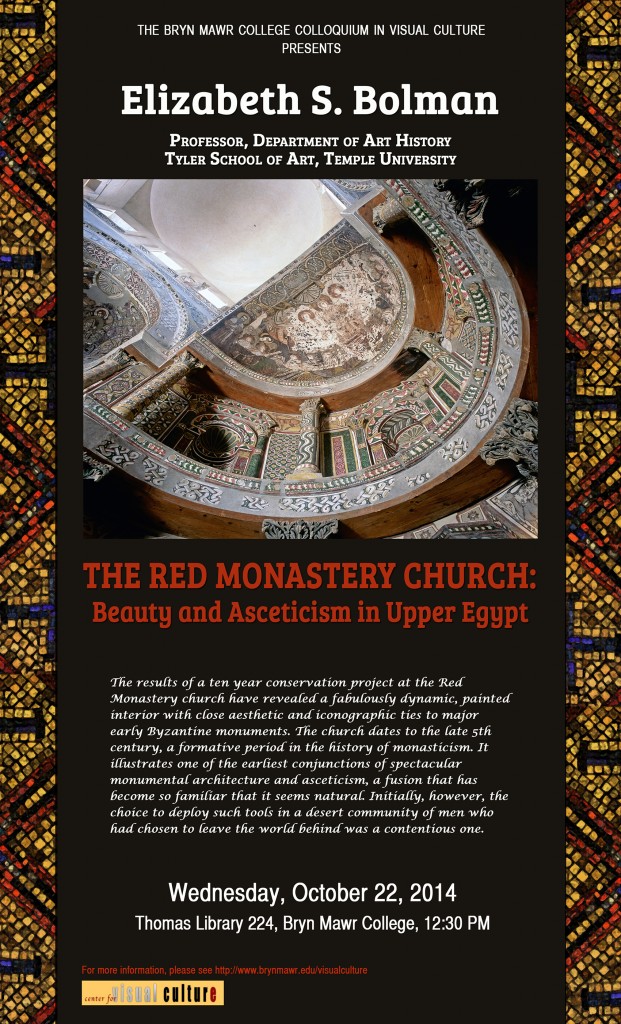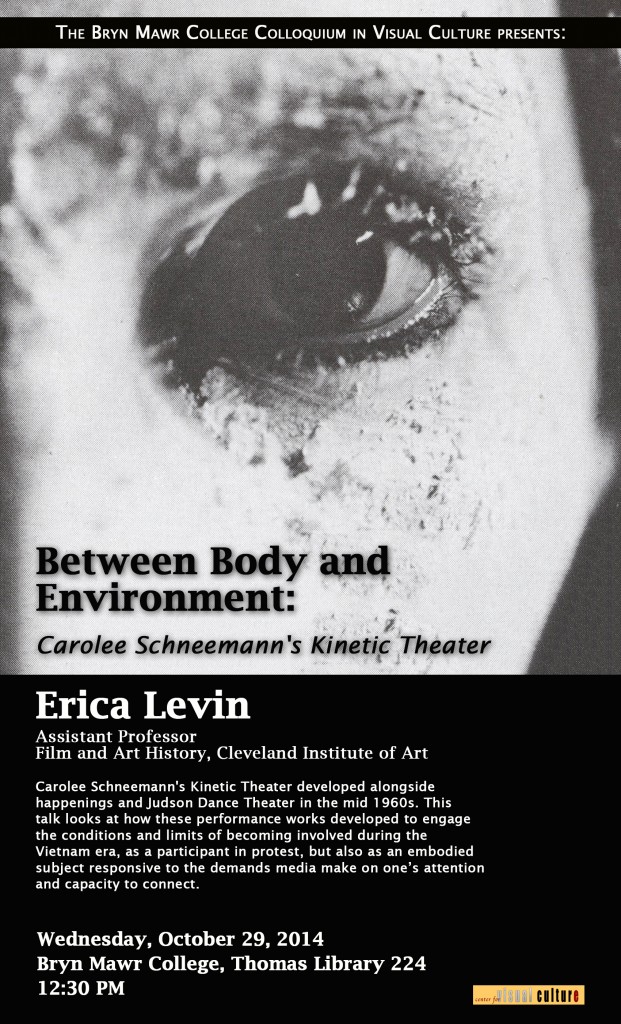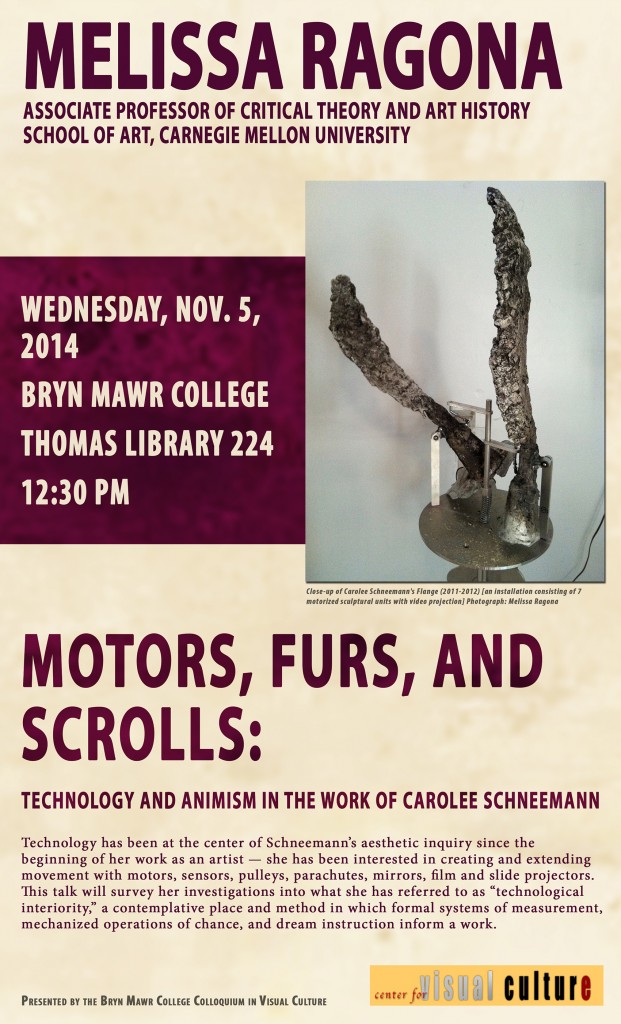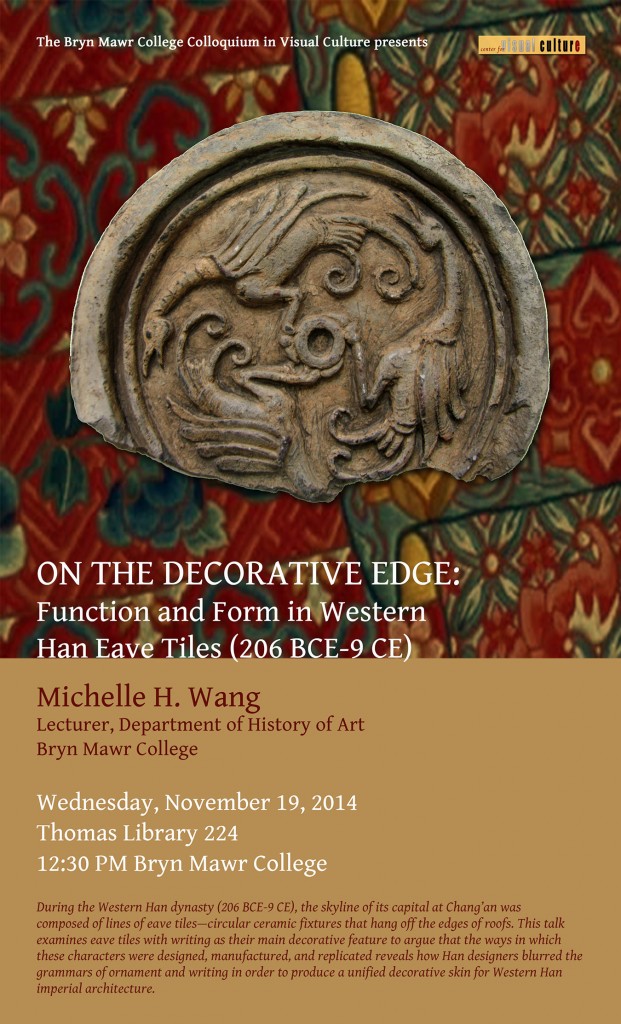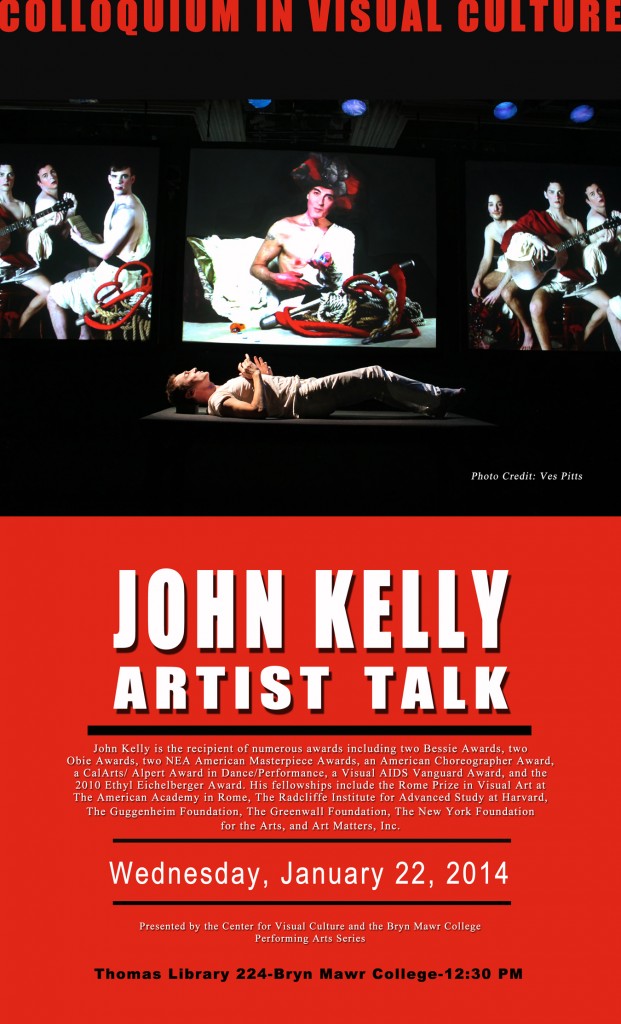Fall Break
Category Archives: Weekly Colloquia
October 22, 2014 – Elizabeth S. Bolman
Professor, Department of Art History
Tyler School of Art, Temple University
“The Red Monastery Church: Beauty and Asceticism in Upper Egypt”
October 29, 2014 – Erica Levin
Film and Art History, Cleveland Institute of Art
“Between Body and Environment: Carolee Schneemann’s Kinetic Theater”
Carolee Schneemann’s Kinetic Theater developed alongside happenings and Judson Dance Theater in the mid 1960s. This talk looks at how these performance works developed to engage the conditions and limits of becoming involved during the Vietnam era, as a participant in protest, but also as an embodied subject responsive to the demands media make on one’s attention and capacity to connect.
November 5, 2014 – Melissa Ragona
School of Art, Carnegie Mellon University
Melissa Ragona is an Associate Professor of Critical Theory and Art History in the School of Art at Carnegie Mellon University. Her book, Readymade Sound: Andy Warhol’s Recording Aesthetics, is forthcoming from University of California Press, Berkeley and her essays and reviews have appeared in October, Frieze, Art Papers and in the edited collections Women’s Experimental Cinema (2007), Lowering the Boom: Critical Studies in Film Sound (2008), Andy Warhol Live (2008), and Oxford Handbook of Sound and Image (2013).
November 12, 2014 – Timothy McCall
Associate Professor of Art History
Department of History, Villanova University
“’Ussire da le cose de putti et fare le cose de homo’: Material Culture, Courtly Gifts, and Masculinity in Early Renaissance Italy”
For a Renaissance boy to become a lord – and “leave behind childish things and do manly things” as Francesco Sforza duke of Milan instructed his son Galeazzo – required that he perform and embody values which were, at once, martial and amorous, enthralling and violent, domineering and charismatic. This demanded not only models to follow, but objects to possess, wear, and command. Attentive to the agency and even volition of material culture, we will investigate the sorts of things – brocaded garments and hunting animals in particular – that lords wielded, gave, and displayed to fashion and demonstrate ideals of courtly masculinity in fifteenth-century Italy.
November 19, 2014 – Michelle H. Wang
Lecturer, Department of History of Art
Bryn Mawr College
“On the Decorative Edge: Function and Form in Western Han Eave Tiles (206 BCE-9 CE)”
During the Western Han dynasty (206 BCE-9 CE), the skyline of its capital at Chang’an was composed of lines of eave tiles—circular ceramic fixtures that hang off the edges of roofs. This talk examines eave tiles with writing as their main decorative feature to argue that the ways in which these characters were designed, manufactured, and replicated reveals how Han designers blurred the grammars of ornament and writing in order to produce a unified decorative skin for Western Han imperial architecture.
November 26, 2014 – No Colloquium
Thanksgiving Holiday
January 22, 2014 – John Kelly
Performance Artist in Residence
John Kelly is the recipient of numerous awards including two Bessie Awards, two Obie Awards, two NEA American Masterpiece Awards, an American Choreographer Award, a CalArts/ Alpert Award in Dance/Performance, a Visual AIDS Vanguard Award, and the 2010 Ethyl Eichelberger Award. His fellowships include the Rome Prize in Visual Art at The American Academy in Rome, The Radcliffe Institute for Advanced Study at Harvard, The Guggenheim Foundation, The Greenwall Foundation, The New York Foundation for the Arts, and Art Matters, Inc.
January 29 , 2014 – Bethany Schneider
Associate Professor of English
Department of English, Bryn Mawr College
“Depth Perception: The Visual Experience of Writing Popular Fiction”
THE RIVER OF NO RETURN (Dutton 2013), an adventure novel I wrote under the pen name Bee Ridgway, is poised somewhere between so-called “high” and so-called “low” culture. From one perspective, it is stuffed with historical detail and literary citation and has been critically well received, with the Washington Post naming it a notable book of 2013. From another, it is resolutely frothy, with time travel, cliffhangers, sex scenes, and handfuls of exclamation points driving it forward. I will discuss the visual stimuli and the visual experience of writing such a Janus-faced novel, and talk about how my own compromised depth perception, both literal and cultural, led me into the sparkling shallows of popular fiction.
February 19, 2014 – Eng-Beng Lim
Assistant Professor of Theatre Arts and Performance Studies
Affiliated with American, East Asian, Gender and Sexuality, and Ethnic Studies
Brown University, Providence, RI 02912-1897.
Author of Brown Boys and Rice Queens (NYU Press, 2013)
“Future Island Sexuality”

